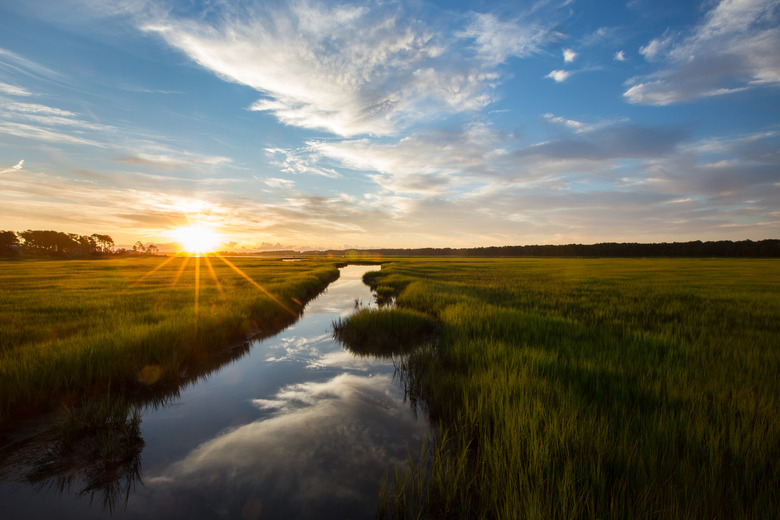How To Protect Wildlife
The difficulty with protecting wildlife is, where to start? Saving baby seals or protecting adult lions appeals to many, but those animals are out of reach for most people. Unless independently wealthy, most people can't jump on a plane and fly off, much as they might want to go. So, what can the average person do to protect wildlife? Like any other huge task, each person can begin with little steps, starting in their own backyard.
Start at Home
Start at Home
Learn about the local wildlife. Study the local plants and animals; put up a birdfeeder or two. Even those who live in urban and suburban areas can support local and migratory birds. The food you provide can save birds and supply them with the extra energy they need for migration. Just be aware that a birdfeeder may attract other local wildlife like squirrels, mice, skunks or even deer. A hummingbird feeder can attract bees, especially when the weather becomes very hot. Place the feeders in areas where the unexpected company won't be a problem; raise or hang the feeders so that deer, squirrels and mice can't reach them, or use feeders designed to reduce access by unwelcome visitors.
The biggest danger to many animals is habitat destruction. Support or plant native plants and provide an environment that supports local wildlife. Plant a pollinator garden; put up birdhouses, bat houses and bee houses. Even a few containers with eco-friendly plants selected to support local birds and bees makes a difference.
Help wildlife stay wild, in the wild. Don't store or leave pet food outdoors. Feed pets inside. Cover or secure garbage to keep wildlife out. Don't feed wildlife (other than using a bird feeder for birds), especially in a way that makes them comfortable around humans.
Make environmentally friendly choices at home. Washing down the driveway sends oil and other pollutants into storm drains. Storm-drain water goes directly into streams and other waterways, adversely impacting fish and wildlife downstream. Sweep the driveway instead.
Another hidden pollutant is animal feces. Whether in the backyard, along a path or at the beach, feces washed into the storm drains eventually reaches streams and waterways, spreading potentially hazardous bacteria including E. coli. So, pick up your pet's droppings.
Warning
Many bird and small animal populations have been severely impacted by cats. Try to keep cats inside; letting them roam damages the native animal populations and, sadly, also sets up the cats for a cruel end at the hand – or wheel – of cars. Along the same lines, even the friendliest dogs may be tempted to chase and harm wildlife, especially if they run in a pack. Controlling pets and supporting spay and neuter programs helps protect wildlife.
Learn About Your Wild Neighbors
Learn About Your Wild Neighbors
Learning about the local wildlife can start with local parks, conservation groups, fish and wildlife, extension offices and wildlife rescue organizations. These groups focus on ways to save wildlife. Learn and support their efforts. Visit wildlife sanctuaries and refuges to learn more about ways to save wildlife. Volunteer, or donate cash or materials.
Find out if there is a conservation plan for the area. If there is, study it to learn more about future conservation efforts.
Learn about invasive species in the area. Don't introduce more, and remove those invasive species when possible. One of the many ways to conserve wildlife and forest ecosystems is to prevent invasive species from disrupting the natural balance.
Participate, when possible, in local clean-up efforts. Many community groups sponsor clean-up days along local beaches and waterways, in parks and along greenways. Every piece of trash picked up is one less piece of pollution. Don't wait for a local event, though; picking up trash you find helps reduce the overall pollution, both locally and globally. Pollution, from cigarette butts to plastic to animal feces, severely impacts wildlife.
Become a Citizen Scientist
Become a Citizen Scientist
Maintain a notebook of wildlife sightings and observations. Participate in data gathering by sharing information. Online projects like those listed at SciStarter (funded by the National Science Foundation through a grant to Arizona State University) gather data to be used in a variety of studies. Studies of migratory bird patterns, locations of plants and animals, degree of sound or light pollution, or mapping streams and landslides all contribute to understanding and protecting the environment, ultimately helping protect wildlife.
Create a Personal Conservation Plan
Create a Personal Conservation Plan
Despite the distances, there are ways to support global efforts to protect wildlife. Making donations, even small donations, helps. Adopt an animal through an organization's program, and then collect redeemable bottles and cans and send the money to an established program. Or, join or create a club to sponsor wildlife protection.
Choices made at the store extend far beyond the cash register. Use reusable bags rather than plastic or paper. Choose eco-friendly products. Although many products may be labeled as ecologically responsible, some of the more reliable labels include: USDA Organic, Fair Trade Certified, Marine Stewardship Council, Green Seal, Energy Star, Forest Stewardship Council, Rainforest Alliance Certification and Certified Wildlife Friendly. These labels certify that the products were grown, collected or taken using environmentally responsible methods.
Cite This Article
MLA
Blaettler, Karen G. "How To Protect Wildlife" sciencing.com, https://www.sciencing.com/protect-wildlife-2062950/. 22 November 2019.
APA
Blaettler, Karen G. (2019, November 22). How To Protect Wildlife. sciencing.com. Retrieved from https://www.sciencing.com/protect-wildlife-2062950/
Chicago
Blaettler, Karen G. How To Protect Wildlife last modified March 24, 2022. https://www.sciencing.com/protect-wildlife-2062950/
